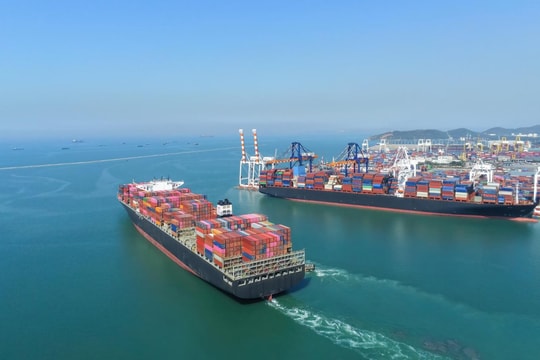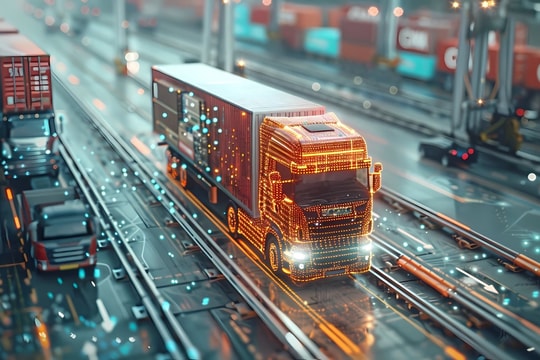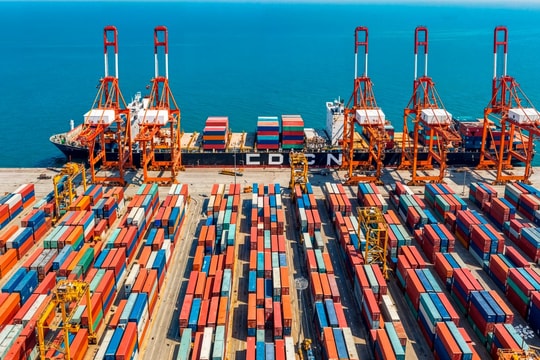
Indonesia and Vietnam Lead the Growth
Southeast Asia, with a population of over 600 million and a combined GDP of around USD 3 trillion, is among the fastest-growing regions in e-commerce, driven by growth rates of 6.2% in 2021 and 5.1% in 2022.
In 2024, e-commerce revenue in the region is projected to reach USD 116.5 billion. The e-commerce logistics market is expected to hit USD 6.22 billion in 2024 and grow to USD 7.12 billion in 2025, with a compound annual growth rate (CAGR) of approximately 14.5% through 2029.
Indonesia, with its hundreds of islands and uneven infrastructure, faces major challenges in “last-mile” delivery. Meanwhile, Vietnam leads the region with a Gross Merchandise Value (GMV) increase of 52.9% in 2024, surpassing Thailand (34.1%) to become the third-largest e-commerce market in the region. In 2023, Vietnam recorded USD 22 billion in GMV and is projected to reach USD 52 billion by 2025, according to Google, Temasek, and Bain & Company.
“Last-Mile” Delivery and Inventory Management in a Complex Environment
The Challenge of Last-Mile Delivery
Last-mile delivery remains a difficult challenge due to geographic fragmentation and high consumer expectations. Vietnam and Indonesia still rely heavily on a diverse but unstandardized network of providers such as Ninja Van, J&T Express, and Kerry Express.
More than 60% of e-commerce revenue in the region comes from mobile devices, yet current logistics systems remain underdeveloped to meet the demand for fast and precise (time-slot) deliveries.
Inventory Management and Warehousing
E-commerce is increasingly demanding large-scale warehouses (10,000–15,000 m²), replacing traditional 1,000 m² facilities. Inaccurate demand forecasting often results in overstocking or stockouts, severely impacting supply chain efficiency.
From Technology Integration to Innovative Operating Models
Fast Delivery and Omnichannel Models
Ninja Van uses advanced routing algorithms to optimize delivery paths in Vietnam and across the region. Shopee and Lazada partner with logistics providers to cut costs and improve delivery efficiency.
In Indonesia, crowd-shipping startups are piloting models that leverage freelance drivers and decentralized contracts to handle last-mile delivery, aligned with e-commerce growth.
Tracking Technology and Warehouse Automation
IoT and Big Data enable real-time order tracking, improving delivery accuracy and minimizing waste.
Solutions like using autonomous delivery vehicles in densely populated urban areas—as seen in JD.com’s operations in China—have proven to reduce costs and increase on-time delivery rates.
Smart Warehouse Networks
Regional supply chains are increasingly building mini-hubs near major cities—supporting online-to-offline (O2O) models, shortening delivery times, and reducing warehousing costs.
“Nearly half of SPX Express orders in Asia were delivered within two days of order placement in the fourth quarter, and we reduced Shopee’s overall logistics cost per order by about USD 0.05 year over year. The efficiencies we gain from this tightly integrated logistics network allow us to pass those savings on to buyers and sellers, while ensuring reliable and cost-effective delivery services.”
— Forrest Li, Chairman and CEO of Sea Limited, during the Q4 2024 earnings call.

Innovative Management as a Breakthrough Strategy
E-commerce is restructuring Southeast Asia’s logistics landscape. With Indonesia and Vietnam at the forefront, the regional market is undergoing a dramatic transformation. However, to fully unlock its potential, both businesses and governments must focus on:
- Standardizing transportation and warehousing infrastructure, while adopting modern technologies.
- Building omnichannel networks and flexible logistics models like crowd-shipping and mini central warehouses.
- Encouraging innovation and supporting logistics startups that integrate IoT, AI, and automation.
By aligning with the growth of e-commerce, Southeast Asia’s logistics sector will not only overcome challenges but also gain competitiveness in global supply chains. Vietnam in particular—with its high growth rate and deep digital penetration—is well-positioned to become a leading logistics hub in the region. Strategic policy support, smart investment, and innovative governance are the keys to seizing this golden opportunity.


.jpg)





.png)












